Creative Paralysis is Caused by Overthinking.


Information overload can cause creative paralysis and stop progress dead in its tracks. Here’s how you can set things straight and keep moving forward.
Creative paralysis by analysis is a problem I run into frequently. I want so desperately to move my business and life forward, but feel stuck when deciding my next step. I’ll spend countless hours reading and filtering through other people’s ideas about “the right thing to do.” The information overload is exhausting. What move should I make, and which direction is the right one?
What I’m slowly realizing is that all of this is a waste of time. It’s also seriously difficult to quit. The constant feed of information is addictive. We create busy work to ward off real action. The irony is that over-thinking prevents us from doing what we need to do to move forward.
While listening to a recent podcast from some of the gang over at IDEO, I picked up a one-liner that’s become a solid mantra for warding off over-analyzation. They said, “don’t get ready, get started.” The challenge of diving headlong into the unknown is being open and vulnerable to failure. Failure evokes massive amounts of fear, and fear drives us to do ridiculous things. Often, it drives us to do nothing at all.
So how can you overcome an over-analytical slump and keep things moving forward? I suggest applying the power of design thinking.
When we’re stuck, it’s hard to see things through a different (or better) lens.
If you change the way you look at things, the things you look at change.
— Wayne Dyer
Changing perspective can provide opportunities to get back to the pace that’s needed to carry on. How can we use design thinking to get past creative paralysis? By applying it at the micro and macro levels. It can help us work through societal swings and our day to day tasks. Here are 5 steps you can use to approach your next problem using design thinking.
Observe
Bring your problem into your awareness and be completely open to the fact that you are stuck. Write down what the problem is. Notice how you feel because of it. Identify what’s going on around it. Understand how it came to be. If you can identify patterns of behavior that fueled the problem and the feeling of being stuck, reflect on them. Write them down; it’ll help get the problem out of your head so you can deal with it visually.
Ideate
Now we need to consider how someone, anyone, could handle this problem. How would your mother fix it? How about the person you admire the most? What about someone famous or successful? The idea is to write down as many ideas as you can dream of in a particular window of time. Think quantity here. Some ideas might be safe and calculated, while others are completely off the wall. Remember, no one is holding you to any of them. Ideas are free! Write them down.
Prototype
The next step in a typical design thinking workflow is prototyping. Don’t overthink this step. The goal here is to produce something “workable” as quickly as possible, with minimal effort. This is your MVP. If you’re trying to move your business to a new level and feel unsure about the next step, use prototyping to play out different ideas. Consider the following: You’re trying to increase your design agency’s revenue by 30% over the next 6 months. But you feel stagnant at your current revenue level and can’t figure out how to make that next jump. This ideation step should provide you with piles of ideas that have potential to increase your revenue.
Settle on a few ideas that seem promising and group them into several categories. If your problem is figuring out how to improve client outreach, prototype a simple scripted message to use across your email, LinkedIn, and Facebook accounts. Then set a micro goal, like reaching out to 5 contacts–new and old–3 days a week for one month.
Review
Once you have a pile of prototypes in front of you, you have to review them. In this step, you’ll need to evaluate your prototypes after you’ve tested them for a specific period. In the above example, you could examine how many people responded over the course of 30 days and determine how many led to new business opportunities.
Iterate
Once you’ve reviewed your progress, iterate on your ideas. Think about what you can change and make better. This new system is a part of your bigger trajectory and it can be fine-tuned. A key point here is to identify if the system or prototype is worth pursuing. Per the last example, you might decide to change the scripted message. You could modify your outreach channels or change the follow-up sequence. Or you might end up scrapping the idea because the feedback displayed no promise. In this situation, practice the art of failing fast. Don’t sink time, energy, and resources into an idea that doesn’t work. Fail quickly and move on. I’ve forced too many ideas past the point of viability, only to learn later that they weren’t good ideas! Nix non-viable ideas quickly and focus energy on those that have promise.
Conclusion
What’s the root of creative paralysis by analysis? It’s the notion that there’s only one right answer, or one way to go, or one step to take. Sometimes there are several correct–but wildly different–answers. Truth is, right and wrong are entirely subjective and based on the task at hand. Sometimes you have to venture down the wrong path to understand what the right one looks like. Resist the urge to tie yourself to the success or failure of a precious idea. The beauty of design thinking is that you create so many ideas in the prototyping stage that each one stops becoming “the one.” So if you realize one is a failure, you’ll have created so many others with potential for success that your ego will hardly suffer.
Design thinking is a powerful tool in the creator’s toolbox. By thinking creatively instead of giving in to the analytical default, I discover new pathways for progress.
Through observation, collaboration, and action, we can step beyond creative paralysis by analysis we get stuck in and find clarity.
Utilizing design thinking requires practice. Finding opportunities to apply design thinking to problems is a journey I’m still discovering.
How are you using design thinking? Let me know in comments below!
Thank you!
Fully transparent. Rapid testing. Growth minded.
Fully transparent. Rapid testing. Growth minded.
Schedule your 15-minute free consultation
WE•DO is ready to put our minds to work to drive your growth.


